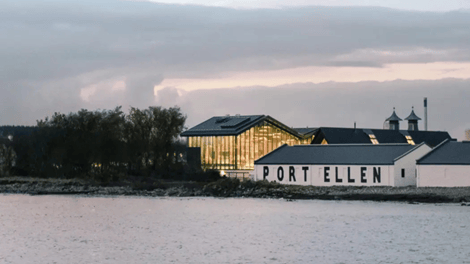What Are Whisky Casks?
-58e78068-9c16-4cb4-b561-3f1e866ee5bb.png/public)
When it comes to whisky, much of the focus is on the liquid itself—whether it’s smoky, sweet, or spicy, straight from Scotland, or a new twist on an old favourite from Japan. But behind every great whisky lies one of the most crucial elements in its creation: the cask. Casks are not just containers for ageing whisky; they are active participants in shaping the flavour, aroma, and overall character of the spirit.
So, what exactly are whisky casks, and why are they so important? Let’s delve into the world of whisky casks and explore their fascinating role in the distillation and maturation process.
What Exactly is a Whisky Cask?
A whisky cask is a large wooden barrel used to age whisky over several years, sometimes even decades. As the whisky matures in the barrel, the liquid absorbs the characteristics from the cask, which can significantly impact its complexity, characteristics, and taste. Although a storage vessel for the liquid, the cask has a major role in developing the flavour of the whisky as well as aromas and textures. It's the "hidden ingredient" in the whisky-making process and one that adds depth and character to the liquid.
Made primarily from oak, whisky casks are carefully crafted to hold the liquid for years, sometimes decades. During this time, the whisky interacts with the wood, absorbing its compounds and transforming from a sharp, clear liquid into the smooth, complex spirit we all know and love.
-bd023c14-10e3-4314-8a24-799de215e1a1.png/public)
The Role of Oak in Whisky Casks
Oak is the main wood of choice for whisky casks, and there are good reasons for that. Its tight grain and porous structure allow just the right amount of air exchange without letting the liquid escape. This slow oxidation helps the whisky develop complex flavours that would not be achieved with stainless steel or glass containers. Oak also imparts flavours and tannins into the whisky, creating layers of complexity in colour, texture, and taste. Different types of oak and treatments (such as toasting or charring) can also dramatically influence the whisky.
The most common oak types used for whisky casks include:
American White Oak
Known for imparting vanilla, caramel, and coconut notes, American oak is frequently used for bourbon production and reused in Scotch whisky.
European Oak
Typically imparts spicier, darker flavours like dried fruit, cinnamon, and cloves. It’s commonly used for sherry casks, which are then repurposed for whisky ageing.
Japanese Oak (Mizunara)
Rare and expensive, Mizunara oak is known for imparting unique notes of sandalwood, coconut, and spices.
Each type of oak imparts its own unique characteristics to the whisky, making the distillery's choice of cask an integral part of the artistry and craftsmanship in whisky production.
 (1)-7fddf96d-bee2-4304-8724-f1f703046b27.png/public)
How Casks Shape Whisky Flavour
So far, you’ve learnt that whisky casks do more than just hold the spirit while it ages. They actively shape its flavour and character, which are influenced by the different attributes of the oak. This transformation happens through several key processes:
Extraction
As the whisky sits in the cask, it extracts various compounds from the wood, such as tannins, lignin, and hemicellulose. These compounds impart flavours like vanilla, spice, and sweetness to the whisky.
Oxidation
The porous nature of the oak allows a small amount of oxygen to interact with the whisky over time. This slow oxidation helps soften the alcohol and develop a smoother, more refined spirit.
Evaporation
Known as the "angel's share," some whisky evaporates from the cask each year, typically around 2-5% depending on the climate. This evaporation concentrates the remaining liquid, enhancing its flavour.
Maturation
The longer the whisky ages in the cask, the more time it has to absorb flavours from the wood and develop complexity. However, there’s a fine balance—ageing for too long can result in an overly woody taste that drowns out the whisky’s natural characteristics.
Reusing and Re-seasoning Casks
Whisky casks are often reused multiple times throughout their lifespan, and with each fill, they impart different characteristics to the whisky. The first time a cask is filled, it offers a rich array of strong, fresh flavours drawn directly from the wood—vanilla, caramel, spice, and sometimes even fruity or smoky undertones, depending on the type of oak and its previous contents. The flavours produced are bold and prominent, which shapes the whisky in a profound way.
However, the wood’s impact softens as the cask is reused for subsequent fills. The whisky will still absorb flavours from the cask, but as the intensity is reduced, this allows more subtle nuances to emerge. These secondary and tertiary fills produce whiskies with a softer, more refined character, often with a greater emphasis on the spirit itself rather than the wood.
Hence, the number of times a cask is used plays a crucial role in determining the final flavour profile of the whisky, which makes managing these casks an essential part of the distiller's craftsmanship in producing great whisky.
In addition to reuse, many distilleries employ the technique of "re-seasoning" casks. This involves aging another liquid, such as sherry, wine, or port, in the cask before it's filled with whisky. The cask absorbs the flavours of the previous liquid, which it then imparts to the whisky during maturation, adding complexity and depth.
Different Cask Sizes
Not all whisky casks are the same size, and the size of the cask affects how quickly the whisky matures and develops its flavour. Smaller casks have a larger surface area relative to the volume of liquid, meaning the whisky will absorb more of the influences from the wood in a shorter time.
Standard Barrel (200 litres)
Used mainly in American bourbon production, often repurposed for Scotch whisky maturation.
Hogshead (250 litres)
A larger cask commonly used in Scotch whisky. It’s typically a repurposed bourbon barrel that has been rebuilt.
Butt (500 litres)
Commonly used for sherry maturation, this larger cask is often repurposed for aging whisky to impart rich, fruity flavours.
Quarter Cask (125 litres)
A smaller cask that accelerates the aging process due to its increased wood contact, resulting in a more intense flavour profile.
Whisky Cask Ownership: A Growing Trend
In recent years, cask ownership has emerged as a popular investment opportunity. Rather than simply purchasing a bottle of whisky, investors can buy entire casks that are still maturing. As the whisky ages and potentially increases in value, owners can choose to either bottle the whisky or sell the cask to other collectors or investors.
Platforms like WhiskyGenius make it easier than ever to invest in whisky casks. Offering access to a wide range of maturing casks from renowned distilleries, WhiskyGenius lets you own a piece of history and enjoy the potential for increased value of the whisky and personal satisfaction as your cask ages to perfection.
Conclusion
Whisky casks are far more than just storage vessels—they are integral to the whisky-making process, shaping the spirit’s flavour, aroma, and character over time. Whether it’s the choice of oak, the previous contents of the cask, or the number of times it’s been used, every detail matters in creating the final whisky we know and love. Whether you're sipping a dram or investing in a cask, understanding the importance of the whisky cask will deepen your appreciation of this timeless spirit.
More Content
View More




















